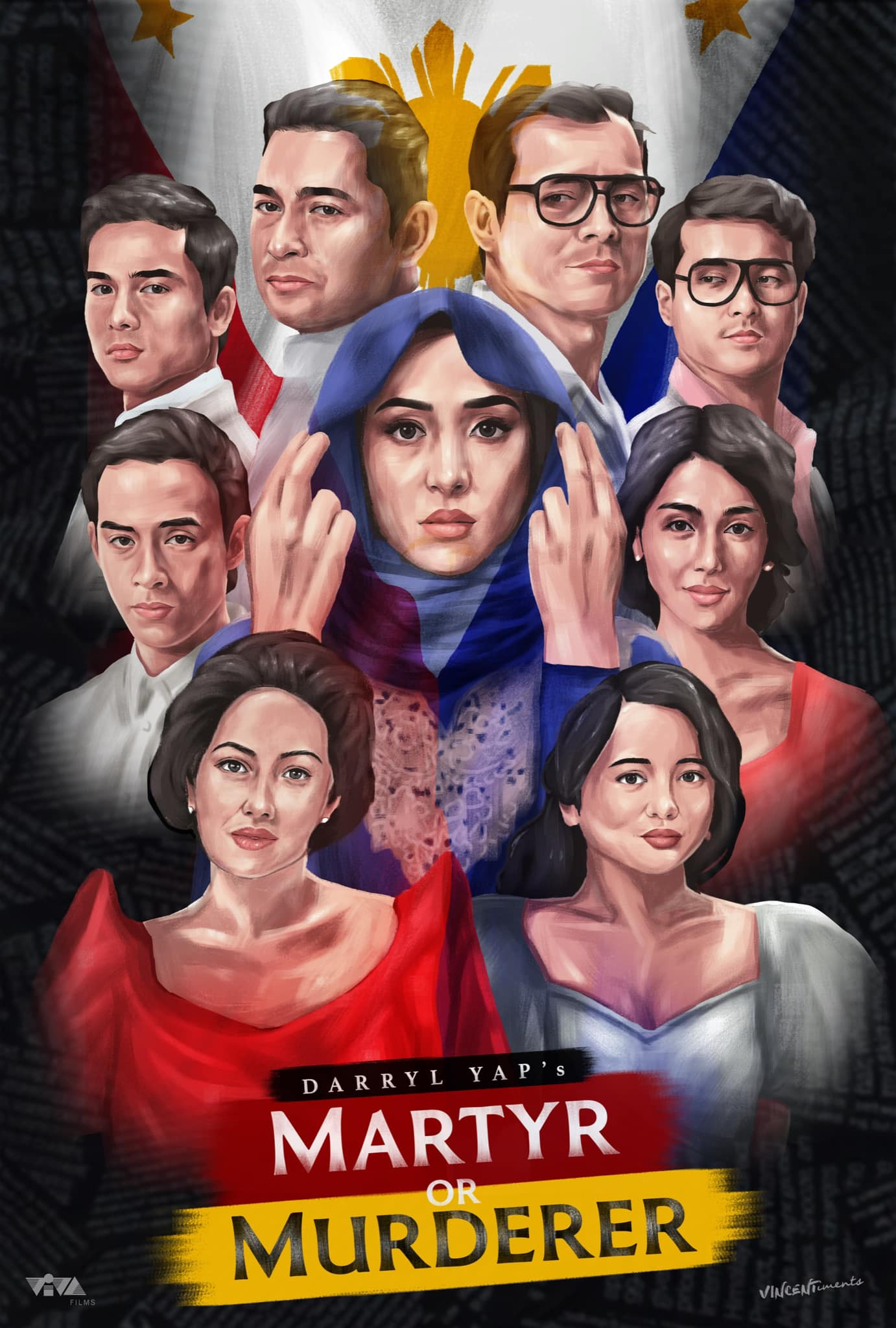by MARIA ALTHEA V. JAVIER
WITHIN GRANDIOSE set designs and cinematic techniques, an intimate presentation of what is claimed to be a version of the “truth” takes its second chance at public response.
With scenes touching upon the familiar avenues of vulnerability, Darryl Yap quenches his thirst for epiphany in the assertive sequel Martyr or Murderer. With remnants of the Marcoses’ plea for sympathy from its 2022 prequel Maid in Malacañang, its aim still steers clear of what their critics seek.
Spanning three decades of events, Yap not only offers viewers an account of the alleged truth, but also tries to persuade the masses to accept it. It bombards viewers with media archives of the Aquinos and the Marcoses, all seemingly used as backup evidence to further endorse the film’s accuracy.
Immersing viewers into her point of view, Imee Marcos (Christine Reyes) principally leads the film’s progression as she explores her family’s version of what truly happened before and after Ninoy Aquino’s (Isko Moreno) assassination.
While in exile in Morocco, she is accompanied by her friend and confidante Maricar (Rose Van Ginkel) who was instrumental in sparking discussions about the questions surrounding Aquino’s assassination. This serves as the turning point of the film, with the latter half focusing on the family’s fear of being pointed out as culprits.
Despite Martyr or Murderer’s endorsement as a film that tackles the years before and after Aquino’s assassination, this aspect of the story was rather flat. Imee’s desperate plea for mercy was more of the film’s mood maker. With the presence of such a character, Aquino’s role simply gets lost. Yap’s usage of Aquino’s assassination in the film was nothing but a platform to push the vehicle that would eventually deliver the film’s final message: the vehicle of a father-daughter relationship.

Imee’s role is set early on in the film, cementing what point of view the audience would get: a provoked and protective eldest sibling, fearful of being wrongly accused. It puts heavy emphasis on the idea that just like everyone, the late dictator Ferdinand Marcos Sr. (Cesar Montano) and the incumbent senator Imee had their fair share of emotional burdens as father and daughter. Through the colorful familial relationship of these two characters, led by Reyes’ compelling performance, it eventually sheds light on what it seeks to capture: the guilt of the masses.
Longing for lost family time and dwelling on all the possible dangers looming by, it shows the president’s daughter at her most vulnerable and the president at the height of martyrdom. Its message is not a plea but rather a call for responsibility to recognize the “favor” Marcos Sr. has done for the country.
It tells the narrative that within those 20 years of ruling, Marcos Sr. has always had the public’s best interest in mind. It burdens people to feel guilty for whatever they might have thought or said about the Marcoses. It also jabs at Aquino’s supporters with mentions of the late senator receiving assistance from the Marcoses for his heart treatment. In every way possible, Yap sought guilt for the Marcos family.
As viewers navigate through these events, deficient technical aspects expose themselves. Shots of Ilocos and Moroccan scenery highlight the production team’s futile attempt at a cinematic masterpiece. One notable example of this is Imee’s breakdown in the desert. The scene showing her wandering to her destination included more drone shots than needed. Drone shots could have added to the solemnity of the scene, but instead, their usage of these felt excessive due to the rough cuts between multiple angles. It felt as if they were showcasing the scenery rather than emphasizing Imee’s grief.
It being a documentary film failed to justify why the transitions from the film to media archives felt clumsy. At one point there is a solemn scene of their bond as a family, then suddenly an archive of Aquino’s interview cuts into the scene. Its deficient technical aspects are a revelation of Yap’s level of filmmaking, as some scenes, specifically of comedic relief, offer fragments of his popular online skits, which may or may not be detrimental to the quality of the film itself.
Subtle yet assertive, Martyr or Murderer passes the burden to its audience through these two contradicting tones. Imee’s character overshadowing Aquino’s is already a dead giveaway of how Yap aimed to frame the film. And with the third installment on the way, it now calls for the public to make sense of the film’s title as quickly as they can.
As if an obvious response has already been conditioned, the film hints at its own version of the truth. Whatever this truth is, Martyr or Murderer simply pushes the agenda that Filipinos owe the Marcoses for the services they, as public servants, are required to give, and willingly gave. F



